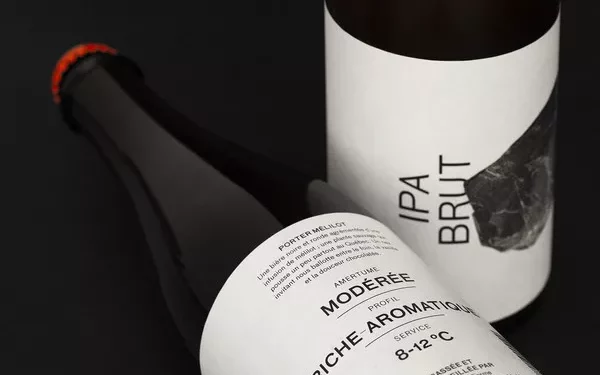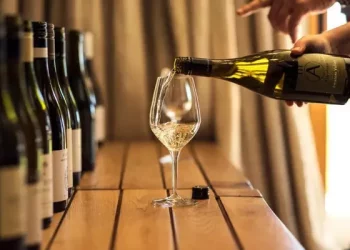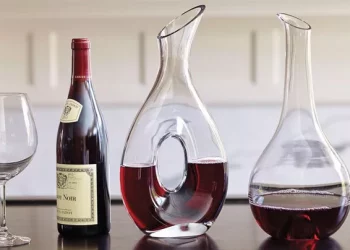Alsace has three basic AOC, namely Alsace wine (Als), Alsace Grand Cru and Cremant d’Alsace sparkling wine (Cremant d’Alsace AOC), the latest of which is promoted,
It came into effect on August 24, 1976.
Alsace sparkling wine is the fastest growing AOC class of wines, known for its even bubbles and delicate taste.
Across France, there are four regions that use Methode traditionn to produce sparkling wines: Champagne, the Loire, Bourgogne and Alsace.
Alsace RANKS second among THE FOUR REGIONS IN terms OF SPARKLING WINE PRODUCTION, PRODUCING 25, 50 million sparkling wines (33 million bottles) a year, equivalent to 10 percent OF CHAMPAGNE production.
In fact, Moet et Chandon produces as much champagne every year as Alsace produces sparkling wine.
Eighteen percent of Alsace’s land is devoted to grapes for Cremont sparkling wine, an area equivalent to 2,800 hectares, which is close to the 32,000 hectares in Champagne.
France’s domestic consumption of Alsatian Cremont sparkling wine accounts for 30% of its total sparkling wine consumption.
The traditional method is used to make sparkling wines of the best quality and best aging potential in the world.
It originated in the Champagne region and the main steps are as follows: 1. The grapes are picked when they are high in acidity and low in sugar content, then pressed and fermented using standard white wine making methods to obtain the base wine.
The base wine is usually about 11 percent alcohol by volume, and is then fermented with sugar to produce a wine of about 12.5 percent alcohol by volume.
Such a wine is then registered with the official name “Vin destine a l’elaboration de Cremant d’Alsace”, which is the base wine used in the production of Cray Mont sparkling wine.
2. Next, add sugar and yeast to the base wine, bottle it and let it undergo secondary fermentation in the bottle.
Use a beer cap to seal the bottle.
At the end of the secondary fermentation, the air pressure in the bottle reaches 4-6 bar.
3. The secondary fermentation should last for several weeks.
After fermentation is complete, yeast cells die and naturally dissolve, or autolysis, over a period of time.
Yeast autolysis gives sparkling wine a toasted aroma.
4, in order to remove the yeast precipitate (also called wine mud), need to be “Remuage”.
The bottles are mostly handled using large gyropalettes, which allow the yeast deposits to be transferred to the neck of the bottle.
5. degorgement can be carried out after the bottle is turned.
When the bottle neck is frozen and the cap is pried off, the yeast precipitate pops out of the bottle, pushed by pressure in the bottle.
6. Part of the liquor is lost in the process of de-dredging, so you need to refill the bottle with a mixture of wine, sugar and yeast, known as a “liqueur d’expedition”.
This process is called rehydration.
Finally, the bottle is sealed with a traditional cork and metal cap.
1. The legal grape varieties of Althusian Cremont sparkling wine include Auxerrois, Chardonnay, Pinot Blanc, Pinot Gris, Pinot Noir and Riesling.
Among them, rose sparkling wine can only be made using pinot noir.
2. The maximum yield of grapes is 10,000 l/ha, but in practice this figure is generally limited to around 8,000 l/ha.
To brew, ‘must’ (a mixture of grape juice and crushed grapes) needs to be at least 8.5% alcohol by volume, which means 145g of sugar per litre.
3. The grapes for Alsace sparkling wine need to come from vines that are more than three years old.
4. Grapes should be harvested manually, transported in containers with a capacity of not less than 100kg, and then pressed in whole bunch.
A maximum of 100 litres of grape juice can be squeezed for every 150kg of grapes.
5. The base wine may not be bottled to begin the secondary fermentation process until 1 January of the New Year following the harvest year.
6. The wine needs to sit on a ‘sur latte’ for at least 9 months before de-slicing.
(For non-vintage champagne, it lasts 15 months; for vintage, it lasts 36 months.)
The latest market dynamics at any time to see, please pay attention to.












































